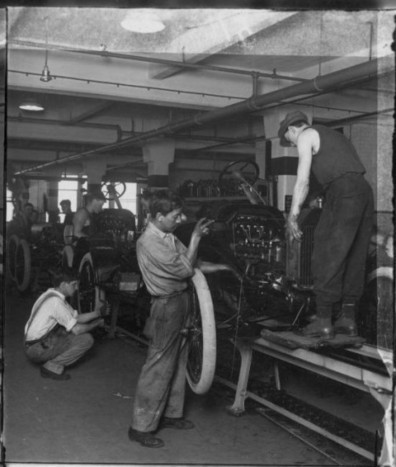Oct 9 2013
Model T Assembly Line Starts For First Time – October 7, 1913 | The Truth About Cars
See on Scoop.it – lean manufacturing
This is mostly interesting for the collection of photos from the Ford Highland park plant.
See on www.thetruthaboutcars.com




Oct 12 2013
Silos, “Value Streams,” and Lean Implementation
The on-line chatter about Lean is all about how you need to break down functional departments — or silos — and organize the company around “Value Streams” that encompass all the resources needed to fulfill orders for a product or product family, and are close cousins of BPR’s business processes and Wickham Skinner’s focused factories. When discussing implementation, however, the same value stream boosters/silo busters recommend that you start by setting up a “Kaizen Promotion Office” or “Lean Department.” This reminds me of the 1980s BBC series Yes Minister, in which an effort to streamline government starts with the creation of a new “Ministry of Administrative Affairs” and the hiring of 25,000 more civil servants to do the streamlining.
While it is ironic to create a new functional department while talking value streams, it reflects a reality: the notion of organizing everything by value stream is simplistic. As discussed in my comments on Deming’s exhortation to break down barriers between departments, there are many activities in a manufacturing organization that we cannot or should not distribute among value streams, including the following:
As for the Kaizen Promotion Office or Lean Department, mission creep all too often takes it from a feasible facilitation and communication role to a direct implementation role, which is hopeless because:
For the changes to happen and to stick, there is no alternative to leadership from within the organizations responsible for the target operations and participation by individuals who are directly affected.
Share this:
Like this:
By Michel Baudin • Asenta selection, Organization structure 2 • Tags: kaizen promotion, Lean, Silo, Value Stream